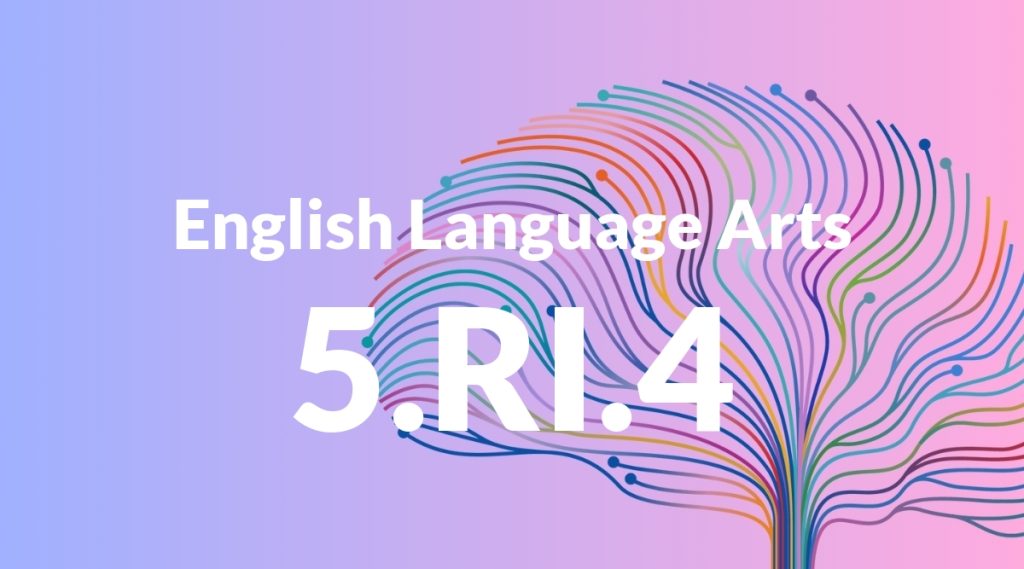Standard: 5.RI.4 – Determine the meaning of general academic and domain-specific words and phrases in a text relevant to a grade 5 topic or subject area.
Grade level: Grade 5
Subject: English Language Arts
Domain: Reading: Informational Text
Teacher Overview
This standard focuses on helping students determine the meaning of general academic and domain-specific words and phrases in informational texts. Mastery of this standard is crucial as it builds students’ ability to comprehend and engage with complex texts across various subjects. Students should be comfortable using context clues and identifying main ideas and key details in texts before tackling this standard.
Students will progress to analyzing the structure of texts, understanding how different parts of a text relate to each other and contribute to the whole.
Common Misconception 1
A common misconception is that students may rely solely on context clues to understand unfamiliar words. This approach can be limiting as context clues are not always sufficient.
Intervention 1
To address this, teach students to use context clues in conjunction with other strategies such as analyzing word parts and using reference materials like dictionaries.
Common Misconception 2
Another misconception is that domain-specific words are only relevant within their specific context, leading students to overlook their broader applicability.
Intervention 2
Provide examples of domain-specific words used in various contexts to demonstrate their broader relevance and application.
Prerequisite Knowledge
Students should have a basic understanding of context clues and be able to identify main ideas and key details in a text.
Subsequent Knowledge
After mastering this standard, students will be able to analyze the structure of texts, including how specific sentences, paragraphs, and larger portions of the text relate to each other and the whole.
Instructional Activities
- Create a vocabulary journal where students write down new words, their meanings, and example sentences.
- Conduct a word scavenger hunt in informational texts to find and define domain-specific terms.
- Use graphic organizers to break down and analyze the meaning of complex phrases in a text.
- Incorporate group discussions where students share and explain new words they have encountered in their reading.




